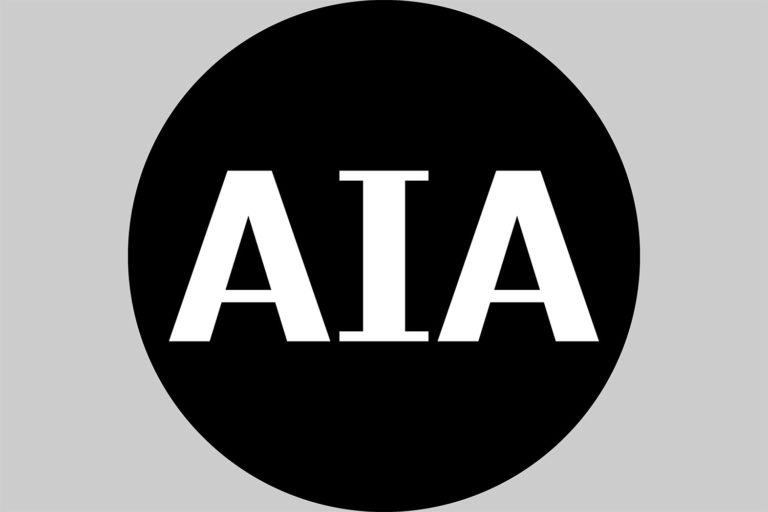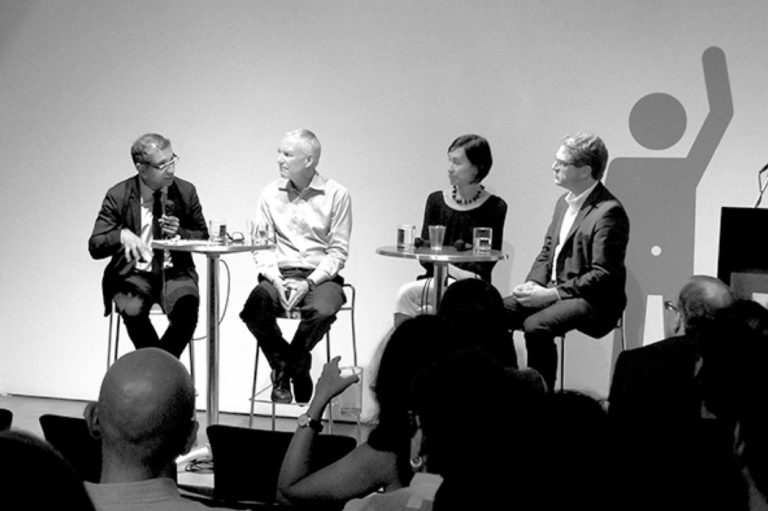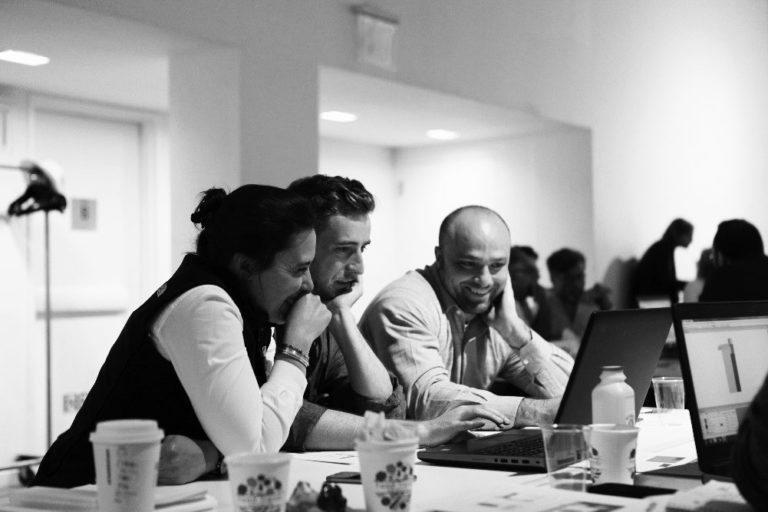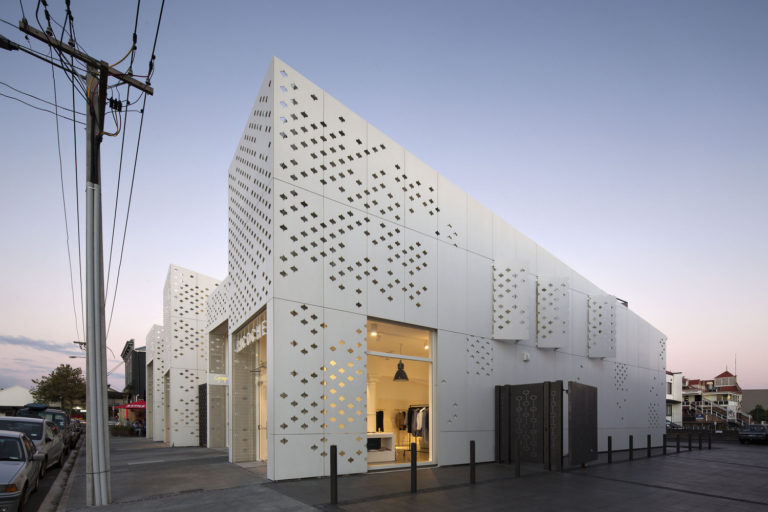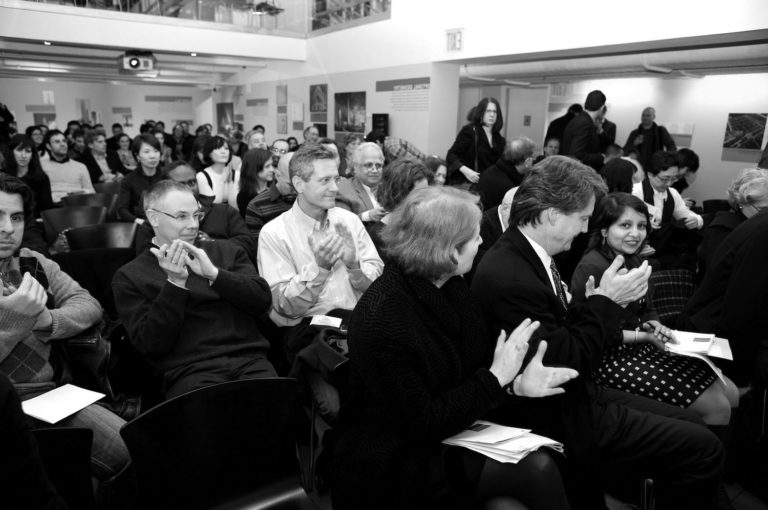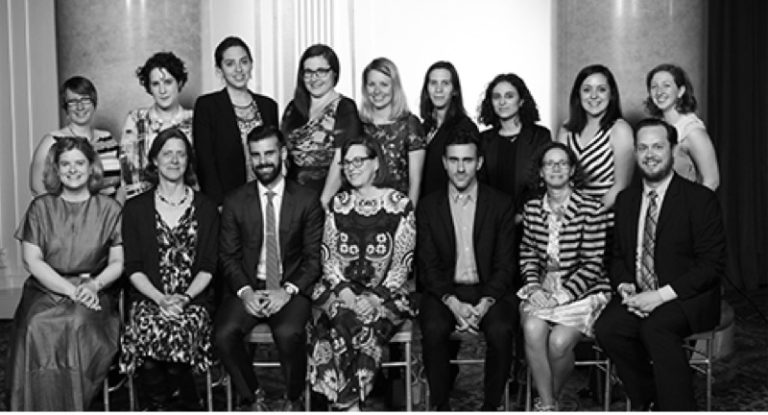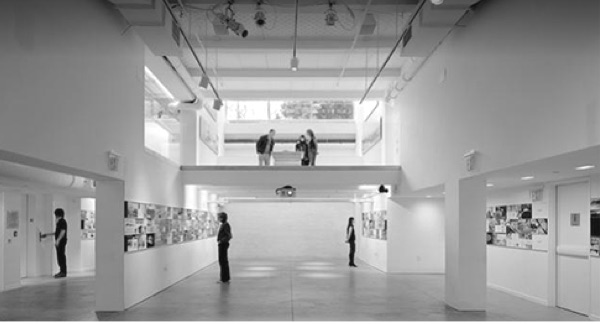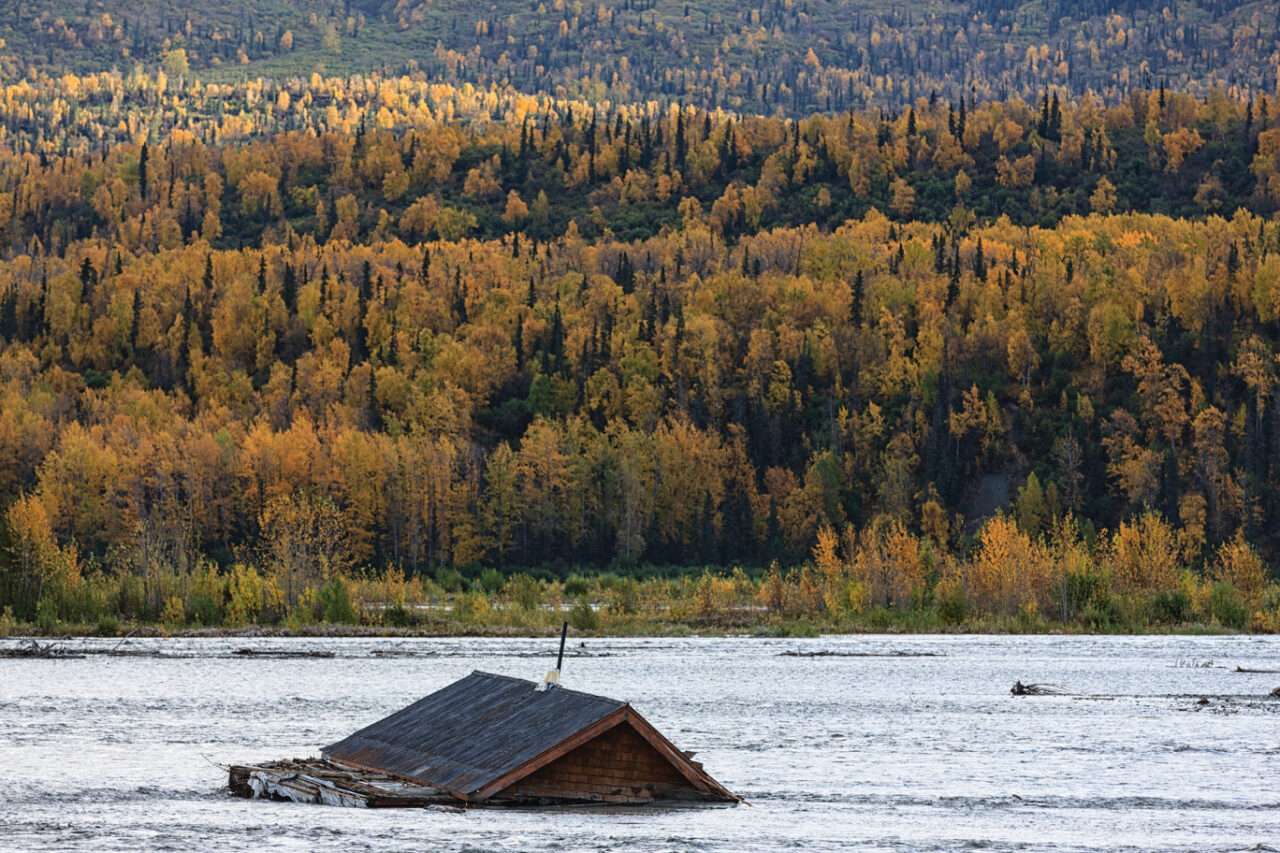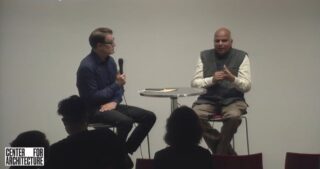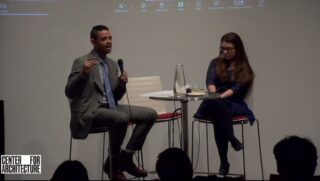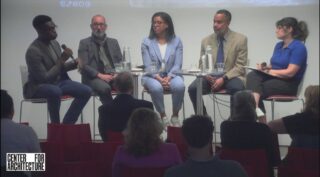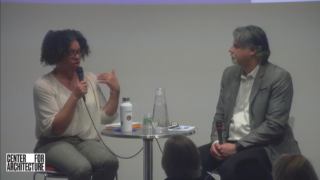Info
Related Links
- Alluvial Decoder: Raleigh, NC Storm Memorial by A Gang of Three
- New Documentary on PBS about the recent LA Wildfires
- The Way Hurricanes Kill Is Changing. Helene Shows How.
- Is the Northeast Entering Its Wildfire Era?
- In the Rockaways, voices call for a more cohesive approach to resiliency design
- Climate change tests the insurance industry and could lead to the 'next big economic shock' for the U.S.
- How Helene Wrought So Much Havoc, So Far From the Coasts
- "A Paradise Built in Hell" by Rebecca Solnit studies 5 disasters in depth
- Atlas of Emergency: stories of places where the Emergency procedures have been generated from the community
- Climate change is messing with time more than previously thought, scientists find
- Here It Comes: Another Hot Summer in Europe
- Will Commercial Real Estate Be In Good Hands When Disaster Strikes? Ask New Orleans
- Pratt Earth Action Week April 1-6 2024
- The East Coast Is Sinking
- Climate Change Is No Laughing Matter. Or Is It? - NY Times
- Adapt: Climate Change and the Built Environment - Interview with Klaus Jacob
- Visualizing Climate Disasters’ Surprising Cascading Effects See how climate disasters cause rippling effects far beyond the initial event
- The Quest to Clean Up Coney Island Creek, Part 1: Industrial Past Collides with a Superstorm
- Hoboken, New Jersey is building for a very rainy day - New York Times
- Why it's so hard to stop building homes in places at risk from climate disasters? - NPR
- Why the East Side Floodgates Look the Way They Do
- These Houses Are At Risk of Falling into the Sea - The US Government Bought Them
- As Climate Shocks Multiply, Designers Seek Holy Grail: Disaster-Proof Homes
- Can U.S. Roads Withstand Increasingly Extreme Weather?
- The Earth's Four Hottest Days
- Climate change could swamp this island. Home sales are surging.
- Trust for Governors Island Launches Living Lab, a New Slate of Public Programs Amplifying Climate Action in New York City and Beyond
- New Climate Maps Show a Transformed United States
- The Plan to Save New York Will Ruin the Waterfront
- Pratt Sustainability Center announces Pratt Earth Action Week March 27 - April 2
- Elizabeth Kolbert's article from the New Yorker on Climate Change from A to Z
- Maya Lin's Climate Memorial Project
- Release of the 6th IPCC Climate Crisis Report
- Opinion: New York’s Climate Crisis is a Housing Crisis
- Spared By Sandy, Hunts Point Food Market Slow to Address Flood Risk
- The Housing Photographer Who Chronicled Sandy’s Destruction in Queens
- The CCRE Program: CRF's Coordination and Collaboration in the Resilience Ecosystem grantmaking supports the development of the tools, services and resources that practitioners have identified as essential to scaling the efforts and catalyzing the investment needed to increase resilience to climate-related impacts across the United States.
- Incorporating Nature-based Solutions in Community Climate Adaptation Planning
- How Will We Know We’re Adapting?
- Centering Equity in Climate Resilience Planning & Action
- Ready-to-Fund Resilience
- Meet the Challenges of a Changing Climate: Learn about potential climate hazards so you can protect your vulnerable assets.
- Implementing the Steps to Resilience
- Buy-In for Buyouts: 10 Years After Sandy, New York Considers New Funding for Voluntary Relocation
- Mapping Change: Rockaways 2050 - A discussion about the future the Rockaways and impending climate change risks. Part of day-long activities with RISE.
- Art x Climate: A Project of the Fifth National Climate Assessment
- The Climate Economy Is About to Explode
- World heading into ‘uncharted territory of destruction’, says climate report
- THE COMING CALIFORNIA MEGASTORM
- The federal government isn't prepared to relocate America's climate change victims
- The Heat Is On: Cities Search For Ways To Cope With Searing Summers
- Indonesia's giant capital city is sinking. Can the government's plan save it?
- Congo to Auction Land to Oil Companies: ‘Our Priority Is Not to Save the Planet’
- As NYC Releases New Flood Maps, Here’s What You Can Do Before the Water Starts Rising
- City Releases ‘Band-Aid’ Plan for Coping With Heavy Rainfall
- New Study Identifies Rapidly Emerging Threats to Oceans
- As a heat wave grips the US, lessons from the hottest city in America
- As the Great Salt Lake Dries Up, Utah Faces an ‘Environmental Nuclear Bomb’
- Los Angeles appoints first chief heat officer
- Building Resilient Infrastructure to Create Strong Communities
- Thoughts on an Emerging Standard of Care Regarding Climate Change
- HSBC AM global head of responsible investing: 'Who cares if Miami is six metres under water in 100 years?'
- Three Little Houses: A Staten Island Study in Rebounding Post-Sandy
- Here Are the Wildfire Risks to Homes Across the Lower 48 States
- A Vision to Build a City of Refugees in Ukraine
- Cities Brace for Apocalyptic Flooding As New Age of Super Storms Dawns
- Save the Date: BWRC Annual Conference: Sea Level Rise & Brooklyn's Jamaica Bay Communities - May 13, 2022 CityTech
- ‘It’s happening now’: how rising sea levels are causing a US migration crisis
- Pratt Earth Action Week, Spring ’22
- A Queens Coastal Community, Vulnerable to Climate Change, Fights a Plan for ‘High Rise Rentals’
- These Kyiv-based architects designed new modular shelters for Ukrainian refugees
- March 2022 Regional Climate Impacts and Outlooks
- U.S. will see 1 foot of sea level rise by 2050 because of climate change
- Financial markets fueled Colorado’s fires
- Climate Change Enters the Therapy Room
- Climate Resilience - How States Stack Up on Flood Disclosures
- Six climate trends may shape 2022 across the US
- In Hamburg, Surviving Climate Change Means Living With Water
- Commercial Structures Across U.S. Projected To Face $13.5B In Flood Damage Next Year
- American Society of Adaptation Professionals - Ready to Fund Resilience Guidebook and Training
- Elegy for a Country’s Seasons
- ‘River Is Getting Close’ Erosion threatens an Alaskan Indigenous community’s school
- New York City announces another round of resiliency pilot programs as de Blasio prepares to step down
- We Broke the Planet. Now What? (Hidden Brain - Podcast)
- Report: Climate change threatens to devastate the world's leading economic powers — including the U.S.
- Mayor Announces Capital Project to Protect Seaport from Frequent Flooding
- Post-Sandy Initiative: Executive Summary
- Post-Sandy Initiative: Full Report
- Extreme Heat Hot Cities: Adapting to a Hotter World
- People to Know
Topics
-
July 11, 2025
![Judy Liu - Floating Center Student Project]() Judy Liu - Floating Center Student Project
Judy Liu - Floating Center Student ProjectBy Yinghong (Judy) Liu
As climate change accelerates and sea levels rise, communities like Red Hook, Brooklyn, are increasingly isolated from flooding and underserved by traditional infrastructure. The Floating Center offers an adaptive solution: a mobile, aquatic healthcare system that provides dental and veterinary services directly to vulnerable residents and their pets.
The Red Hook Peninsula is low-lying, inaccessible to public transportation, and has high rates of uninsured or underinsured residents. The area is also designated a Dental Health Professional Shortage Area (HPSA), with more than 35% of low-income residents citing cost as a barrier to dental care. Additionally, 30% of local pet owners say they delay veterinary services—despite the proven risk of zoonotic diseases and the emotional support that animals can provide during crises.
The Floating Center combines a converted 42-meter electric ferry with a stationary floating barge to create a two-tier model of care: one focused on emergency response and the other on long-term health. The ferry provides mobile care—stopping in flood-prone areas to provide triage, dental extractions, checkups, and vaccinations—while the barge provides follow-up care, community education, and resilience programs such as ship repair and mental health support. Every element speaks to resilience: marine-grade plywood from hurricane debris forms the walls, recycled PET fabrics upholster waiting areas, and reclaimed boardwalk wood becomes examination tables. Modular partitions allow instant transformation from routine checkups to emergency triage.
More than a clinic, this is a model for equitable adaptation—proving healthcare can float when the land sinks. By integrating veterinary services, dental care, and disaster prep, the Floating Center keeps Red Hook’s community anchored, healthy, and together against the rising tide.
-
April 16, 2025
By Fadila Prastawa, Qinni (Nino) Xiang, Xueer Han, Liliya Treyger
Pratt Institute – Master of Professional Studies, Design ManagementIn an era of growing climate volatility and digital dependency, the risk of citywide blackouts poses serious challenges to urban safety, equity, and mobility. “Beacon of Light” is a research-driven design proposal developed by graduate students in Pratt Institute’s Design Management program. It introduces a scalable disaster mitigation framework that emphasizes personal navigation, emergency response, and community preparedness during large-scale power outages.
The Beacon of Light System is structured around three integrated components:
- Emergency Kiosks strategically located in public spaces to provide first aid, charging stations, and real-time guidance;
- Beacon Buses, retrofitted public transit vehicles equipped with emergency supplies and offline communication tools;
- Offline Navigation Resources, including pre-downloaded maps, multilingual printed guides, and solar-powered radios to support communication during outages.
The research highlights how blackouts disproportionately affect tourists, the elderly, non-English speakers, and residents in underserved communities. Drawing from service design methodologies such as journey mapping and service blueprints, the team created a user-centered framework focused on guiding individuals safely through the stages of a blackout—from disorientation to recovery.
A pilot is proposed for Bensonhurst, Brooklyn, a diverse, transit-reliant neighborhood vulnerable to extended outages. Following initial implementation, the system would scale citywide and eventually to other high-risk global cities. Strategic partnerships with NYC Emergency Management, FEMA, Con Edison, and Verizon are envisioned to support deployment, infrastructure resilience, and outreach.
Beacon of Light also aligns with UN Sustainable Development Goals 11 and 13, addressing the intersection of sustainable urban planning and climate adaptation. By shifting the focus from infrastructure-only responses to human-scale preparedness, the project offers a replicable model that blends public policy, service design, and community engagement.
Beacon of Light reframes blackout response through a design lens—shifting from top-down disaster recovery to proactive, community-embedded resilience. The system offers a replicable model for global cities preparing for an increasingly uncertain energy future.
Note: This project was completed as part of the Design Futures: Theory and Practice course, which culminates the MPS Design Management curriculum at Pratt Institute. For more information, see the Full Report here.
 .
. -
November 19, 2024
![PRATT SHOWS POSTER Apurva Jhamb Capstone]()
As climate change intensifies extreme weather events and strains New York City’s aging energy infrastructure, the need for resilient, equitable clean energy solutions becomes increasingly urgent. This study examines how strategically implemented community solar projects could enhance both grid resilience and energy equity in historically marginalized neighborhoods.
Not everyone in NYC can install solar on their roofs given the various limitations, such as lack of ownership, unsuitable roofs, limited capital, and so forth. Community solar presents a promising solution by allowing multiple residents to share the benefits of a single solar installation at an off-site location in the neighborhood, overcoming traditional barriers to clean energy access. When paired with battery storage, these systems can provide critical backup power during grid failures.
The research identifies priority neighborhoods for community solar development by analyzing multiple equity indicators including, renter-occupied units, power outage complaints, energy cost burden, and environmental health indicators along with roof-top solar potential. The findings reveal that neighborhoods in the Bronx, northern Manhattan, southeastern Queens, and central Brooklyn face compounded energy vulnerabilities. These areas experience more frequent power outages, higher energy cost burdens, and disproportionate health impacts from fossil fuel infrastructure. The study emphasizes utilizing low-impact and underutilized sites in these priority neighborhoods such as large rooftops, parking lots, and remediated brownfields to minimize environmental disruption while maximizing community benefits.
A detailed case study of Bronx Community District 02 (Hunts Point/Longwood) illustrates the potential. This environmental justice neighborhood, which hosts multiple polluting facilities and experiences higher asthma rates, has numerous suitable sites for community solar development including municipal buildings, parking facilities, and industrial rooftops. The study draws inspiration from pioneering projects like Sunset Park Solar in Brooklyn to explore ownership models that keep wealth and decision-making power within communities.
The research recommends implementing Public Participation Geographic Information Systems (PPGIS) to engage communities in identifying and prioritizing potential sites. The study advocates for innovative ownership models that keep wealth and decision-making power within communities. Additionally, grid upgrades are deemed essential to accommodate the increased DER capacity.
The research findings inform recommendations for NYC’s upcoming initiative, Public Solar, emphasizing strategic planning for community solar implementation in prioritized neighborhoods and advocating for collaborative governance to ensure better site control, easy community involvement and ownership pathways. By coupling community solar projects with inclusive planning and robust grid support, NYC can significantly contribute to a more equitable and sustainable energy system, empowering marginalized communities in the fight against climate change.
Note: This project was completed by Apurva Jhamb as part of the Demonstration of Professional Competence (Capstone) course, which culminates the MS Sustainable Environmental Systems curriculum at Pratt Institute, in collaboration with NYC’s Mayor’s Office of Climate and Environmental Justice (MOCEJ) as the client. For more information, see the Full Report here.
-
June 3, 2024
![Five stone towers coming out of a green landscape, seen from afar]()
By Dr. Frederique Darragon, Independent Researcher; Former Visiting Professor, Sichuan University, China
Earthquakes are still unpredictable and can still be deadly, even if today’s state-of-the-art technologies of flexible foundations, shock absorbers, shear walls, reinforced concrete, etc, allow for the construction of earthquake-resistant buildings and skyscrapers. The people of the past did not have such sophisticated contraptions. Nevertheless, many of them understood the basic principles of high productivity, resulting in earthquake-resistant constructions. It was not always the case: for example, the Peloponnese Mani inhabitants, who, because of their towers, repelled numerous invasions, did not figure out how to make their towers, which were rather modest in size, earthquake resistant until the 17th century.
But, nearly two millennia ago, many Himalayan illiterate tribes inhabiting the Sino-Tibetan Marches had created fiercely independent princedoms (some of which were queendoms as recorded in the Chinese Annals of the time) and invented a concept of interlocking stone pillars interspersed with unpegged beams to construct towering edifices that could resist the frequent earthquakes and high altitude climate. Depending on their location in their relative environment, these towers were built for different uses: look-out and sending smoke signal posts, defensive structures, and family status symbols. The tallest and most flamboyant ones were hard to subjugate trading posts on ancient trade routes.
Based on the 113 wood samples I sent for carbon dating, construction went on from the 4th to the 15th centuries. In their day, such towers must have been counted by the thousands. Apart from numerous ruins, nearly 100 towers are still standing tall, improbably gracing steep slopes and deep ravines of this trade and migration corridor with their timeless beauty and outstanding technical achievement. It appears that construction stopped around the 16th century, or maybe the new towers were of a lower quality, and none are still standing today.
Towers can be found in four regions that roughly correspond to ancient tribes’ territories: in Sichuan, there are the lands of the Qiang, the Minyag, and the Jiarong; in Tibet, such towers only exist in two small ancient kingdoms of the Southeast: Nyang-po and Kong-po
Given the remoteness of this corridor of impossible terrain, with many peaks towering over 6000 meters and deep valleys where the Mekong, the Salween, the Yangtze, and their affluents rage towards the lower lands, each princedom had a slightly different natural environment. Only locally available materials were used: timber, local mud or clay, and stones of various shapes, hardness, and quality.This knowledge did not come out of nowhere: early on, people must have realized that buildings made of wood were little affected by earthquakes because of the wood’s flexibility.
As most of this region is south of the 30th parallel, the tree line is around 4,000 meters in altitude. Still, the winters are cold, and the trees grow slowly; consequently, building houses only of timber would have put too much pressure on the environment. Buildings made of stone were also longer-lasting and more adapted to the harsh, high-altitude climate. So, people would build their dwellings of uncut, nearly dry stone and add beams inside the masonry to add tensile force. Wooden beams are frequently used in adobe construction but very rarely in stone construction. As “Habitat” demonstrated, this technique is practically only used on both sides of the Himalayas.
On the southwestern side (India, Pakistan), it is generally called Kath-khuni. It consists of a relatively large number of beams alternating with rows of stones and mud.
The eastern side (Sino-Tibetan Marches) consists mainly of stones with some mud and inserted unpegged wooden beams; some of these beams are inside the walls, while others circle the outside of the walls. Both technologies prevent the walls from splitting open. This technique is still used in today’s traditional houses. I discovered only another group of stone buildings including reinforcing beams: the Meteora monasteries in Greece; it appears this style did not spread.
But another technology was needed to build very tall, free-standing earthquake-resistant towers: interlocking pillars. From the outside, these towers appear similar to ancient towers found in Afghanistan, Iran, or India, but they are not. These three last-mentioned groups of buildings are, in reality, round towers with external buttressing pillars.
As we have restored quite a few of them, we have discovered the specific construction technique of the Himalayan towers. They are not made of a circular wall with outside buttresses; in fact, they are concave polygons whose zigzagging walls are themselves uniquely composed of interlocking pillars woven together, leaning into and buttressing each other. There could be five to 13 pillars, but the towers with eight or 12 pillars have resisted the earthquakes better. The towers with a different number of pillars are all reduced to a small number of tiny ruins.
Such an architectural concept is not seen anywhere else. Worldwide, several pentagonal, hexagonal, and octagonal towers exist, but all are convex polygons.
The houses and towers all have tapered tops, making them more stable. This feature is common in many ancient constructions, as it also prevents the weight of the top from crushing the bottom stones. In tall towers, special care was given to the relative hardness of the stones used.
The openings were small and few, first because towers were eventually used for defense and second because large openings would have weakened the construction. The types of foundations are difficult to assess. The Minyag and Jiarong towers are often built over rocky soil but have a “solid” bottom part of 3 to 5 meters. In Tibet, the towers have doors at the ground level; one fallen tower was excavated and had 3-meter-deep foundations.
As said earlier, many efficient high-tech solutions exist today to build earthquake-resistant city buildings; however, such technologies are too expensive, unavailable, or poorly implemented in rural settings. Consequently, it is of utmost interest to document and record these vernacular architect-less building technologies and ensure that this traditional knowledge continues to be used. Such action can save lives, protect intangible heritage, and reinforce local people’s cultural self-esteem.
For more information see:
HABITAT: Vernacular Architecture for a Changing Climate, edited by Sandra Piesik and published by Thames & Hudson, USA, May 2024 -
May 23, 2024
![View of bloated house in Matanuska River, Alaska, USA]() View of bloated house in Matanuska River, Alaska, USA. Photo: Fotofeeling.
View of bloated house in Matanuska River, Alaska, USA. Photo: Fotofeeling.By Dr. Iftekhar Ahmed, Associate Professor – Construction Management/Disaster Resilience, School of Architecture and Built Environment, University of Newcastle, Australia
Historically, the large catchments in Asia such as those along the Ganges-Brahmaputra and Mekong rivers experienced floods as part of an annual water cycle, and different forms of flood-adaptive vernacular architecture have developed there over a long time, as discussed in my article in the Habitat book.1 In Vietnam’s Mekong Delta, buildings are constructed on the most elevated land or sites raised by landfills; houses have a platform inside or a loft for emergency refuge. In central Thailand in flood-prone areas, buildings are raised on stilts. In Bangladesh, settlements are built on mounds, and in very low-lying areas, buildings on stilts are constructed. These examples demonstrate the ingenuity and age-old wisdom of flood-adaptive vernacular architecture.
However, since the ‘great acceleration’ of socio-economic developments since the 1950s,2 various factors such as urbanization and population growth, and significantly, climate change have created challenges to harmony with the nature of vernacular architecture. For example, in my recent studies, it was found that in Thailand, even after the massive 2011 flood, houses are no longer built on stilts, even though people were aware and built an upper story to be on the safe side;3 thus, the adaptive practices are transforming. Additionally, the COVID-19 pandemic demonstrated our vulnerability to biohazards, exacerbated by the global escalation of human conflicts and related massive demographic transitions, financial instability, and inequality. It is a trend that may well continue and assume more threatening forms in the future, creating powerful pressures on the sustainability of vernacular architecture.
Climate change caused by human activity including the creation and operation of the built environment is one of the most serious challenges for vernacular architecture. Disaster after disaster induced by climate change, particularly floods, each more severe than the last one, presents a future scenario of uncertainty and one of the most critical challenges to vernacular architecture. Floods occur widely around the world and are the most common natural hazard. With our planet’s hydrometeorological variability brought about by climate change, floods have become frequent, more widespread, and extensive, and follow erratic patterns; places that hardly had a history of floods are suddenly experiencing them, for example in the desert city of Dubai this year.4
A key related challenge is the widespread aspiration for ‘modern’ buildings in contexts with a strong tradition of vernacular architecture; this was evident for example in my study in Vanuatu.5 While vernacular architecture there was tuned to local resources and natural hazards, ‘modern’ buildings built without codes and standards were easily damaged and posed a threat to human lives. The built environment develops from the interaction of a wide range of social, economic, cultural, political, and environmental factors. Pressures in any of these factors can lead to vulnerability of architecture, as the Vanuatu example, and indeed a similar global trend demonstrates. As societies aspire to modernize, tremendous pressure is placed on the natural environment. Vernacular architecture is closely linked to nature, draws inspiration from it, and uses natural materials. Yet its creation also has profound impacts on nature in multiple ways such as the removal of trees and vegetation, and together with it, biodiversity and ecosystems. With population growth and urbanization, some of these impacts can be irreversible resulting in negative effects on long-term human wellbeing. For example, even in my much earlier studies,6 it was found that a key natural resource for building vernacular architecture in Bangladesh, bamboo, was declining in supply because of human demand and over-exploitation.
We are now at a critical crossroads—how to translate the lessons of vernacular architecture in the modern context to deal with the challenges posed by climate change, such as floods. Disaster resilience of architecture is often understood as the physical strengthening of buildings; while that is important, improvement of non-structural elements is also necessary, for example, capacity building at both institutional and community levels, early warning systems, and strategies for evacuation and safe refuge. Strategic land use and spatial planning are essential—they allow for avoiding or reducing the exposure to disaster risks that arise from locating and building settlements, facilities, and infrastructure in high-risk areas. For example, with repeat floods in Lismore in Australia, it has now become apparent that people can no longer continue to live in the very lying areas, even though their houses were raised on stilts in response to previous floods—in the recent 2022 flood, the inundation was more than 14 meters.7 There are thus plans to relocate such communities.
Together with floods, there are other hazards that pose a risk to architecture and human settlements, sometimes occurring together or cascading. It is therefore important to understand the types of disaster risk in a certain area in order to design disaster-resilient buildings. There are many examples from around the world where vernacular architecture has demonstrated its resilience, but with climate change, the nature and extent of risk are changing, with multi-hazard situations emerging, presenting new challenges that test the age-old wisdom of vernacular architecture. It is becoming increasingly necessary for designers to understand these multiple risks and the complexity they present and strive to achieve a balanced approach to addressing them. Building codes in many countries cover hazards—these should be consulted and followed. However, for a vast proportion of the world’s population, such as numerous communities in Asia and those who still build and live in vernacular buildings, there is hardly any application of and compliance with such codes. In one of my studies in the Solomon Islands,8 it was found that the local building codes simply did not acknowledge informal ways of building, and hence, it was proposed to review and update the codes with greater sensitivity to the local context. At this point in time, a synthesis between vernacular and modern knowledge is required, where both can inform the other.
Sustainable development and disaster resilience are closely linked; many of the targets and indicators of the UN’s Sustainable Development Goals (SDGs) are concerned with disaster risk reduction of the built environment as a way toward a sustainable future. A study by Sabater et al. mapped vernacular architecture to the SDGs;9 however, there are hardly any studies that specifically explore this link in the context of flood adaptive vernacular architecture. There is definitely an opportunity here to further examine within the transforming global context how vernacular architecture in flood-prone areas of South and Southeast Asia offers potential for developing the future’s resilient buildings. As climate change causes a wider range of challenges, lessons from this architecture will be key to dealing with future risks.
For more information see:
HABITAT: Vernacular Architecture for a Changing Climate, edited by Sandra Piesik and published by Thames & Hudson, USA, May 2024References
- Ahmed, I. (2017). Flood adaptations in the Asian vernacular. In Piesik, S. (Ed.). Habitat: Vernacular architecture for a changing planet (pp. 508-513). London: Thames & Hudson.
- Steffen, W., Broadgate, W., Deutsch, L., Gaffney, O., & Ludwig, C. (2015). The trajectory of the Anthropocene: The Great Acceleration. The Anthropocene Review, 2(1), 81-98.
- Ahmed, I., Pal, I., & Chonlasin, V. (2023a). Complexities of post-disaster recovery: An example from Thailand. Asian Currents, 8 November 2023.
- Watts, J. (2024). Global heating and urbanisation to blame for severity of UAE floods, study finds. Retrieved on 4 May 2020 from https://www.theguardian.com/world/2024/apr/25/global-heating-and-urbanisation-to-blame-for-severity-of-uae-floods-study-finds
- Ahmed, I., & Parrack, C. (2022). Shelter self-recovery: The experience of Vanuatu. Architecture, 2(2), 434-445.
- Ahmed, I. (1998). Crisis of natural building materials and institutional intervention. Habitat International, 22(4), 355-374.
- Siossian, E. (2022). Lismore’s floods see families cling to floating furniture in bid to save themselves. Retrieved on 4 May 2020 from https://www.abc.net.au/news/2022-02-28/lismore-floods-see-families-cling-to-floating-furniture/100867228
- Ahmed, I. (2023b). Addressing the impacts of inland floods on informal housing in Honiara, Solomon Islands. In Dahiya, B., Pascale, F.D., Pietro, O.D., Farabollini, P., Lugeri, F.R., & Mercatanti, L. (Eds.). Disaster resilience and human settlements: Emerging perspectives in the Anthropocene (pp. 61-81). Singapore: Springer Nature.
- Sabater, A.L., Andújar, V.G.L., & Laumain, X. (2022). The SDGs as a useful tool in vernacular architecture management: The case of “17 objectives and a map”. Proceedings of HERITAGE 2022 – International Conference on Vernacular Heritage: Culture, People and Sustainability (pp. 671-678), Valencia, Spain.
Committee Meetings
-
Wed, 9/10, 2025, 6:00pm
-
Wed, 10/8, 2025, 6:00pm
-
Wed, 11/12, 2025, 6:00pm
Past Events
-
Mon, 7/7/25, 2:00pm
-
Thu, 5/15/25, 6:00pm
-
Tue, 2/25/25, 5:30pm
-
Thu, 9/26/24, 6:00pm
-
Thu, 7/11/24, 3:45pm
